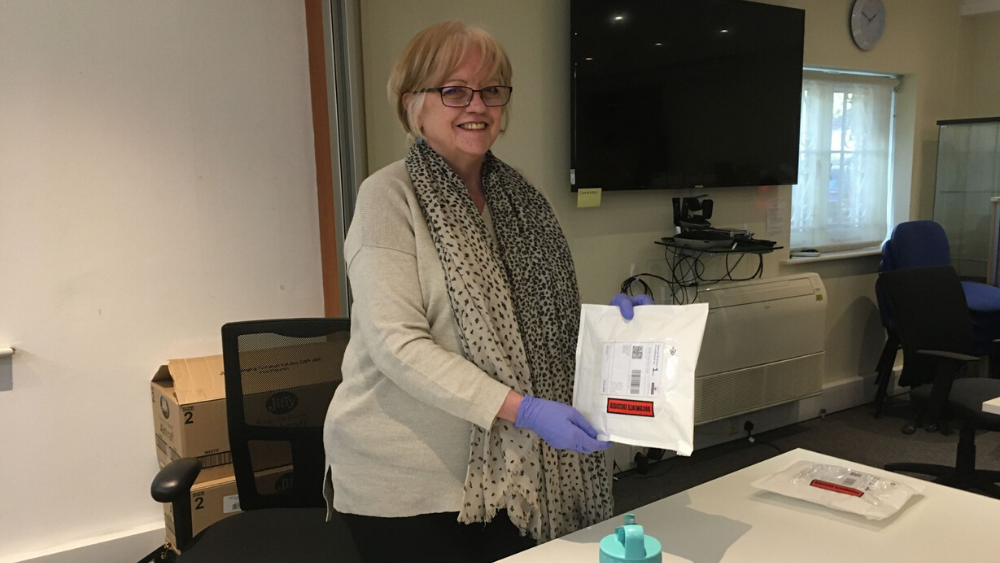Insights
INSIGHTS
All Topics
How Samaritans are using digital and mobile respond to COVID-19
06 May 2020by Former Member
Wellbeing support for NHS workers is among a raft of responses to COVID-19 by the Samaritans charity. Francis Bacon, assistant director of digital services, sets out how digital and mobile are helping the charity deliver during the pandemic
When the government announced restrictions on movement in late March, we knew there was the potential for a major impact on the services Samaritans provides.
A quick survey of our 200 branches revealed that around 30 per cent of our 20,000 volunteers would need to self-isolate because they are either over 70 years old or have an underlying health condition.
If volunteers couldn’t travel to their local branch, they couldn’t provide support to members of the public calling or emailing for support. Facing a potentially large gap between demand and supply, we knew we had to act fast to protect our main service.
How we have responded:
- We created a crisis response plan with operational scenarios based on demand (calls and emails from people in need of support) and supply (volunteers able to be on duty).
- We established thresholds to support volunteers to volunteer safely, following government advice, and keep our service open when people need it most.
- We carried out a financial risk assessment to review lost and at-risk income nationally and across our 201 branches across the UK.
- We explored additional costs needed to take forward urgent priorities to best respond to the impact of COVID-19 on the service.
- Like many organisations, we have developed new ways of working, since our staff team have gone fully remote. Now many of the operational teams are aligned around long-term services (such as “Listening Service” and “Volunteer recruitment and training”), rather than discrete time-bound projects or siloed functions.
- Finally, we have explored remote volunteering as part of our new NHS service (see below).
In terms of our specific digital response, we now plan on virtual whiteboards (Miro), work from consolidated Kanban boards (via Trello), discuss in chat threads (Workplace) and store files in standardised formats (Sharepoint).
We are getting used to fortnightly sprints and daily stand-ups as we ensure that all the work continues even though we are not physically present together. Improving our ways of working in this way has allowed us to take on the urgent new priorities, and still collaborate well.
It is also crucial for Samaritans staff and volunteers more widely to communicate and collaborate well – especially when so much is changing. Before the coronavirus outbreak, we were already rolling out Workplace, an organisational collaboration tool that is free for charities. We’re seeing high levels of take-up and engagement on the platform – so now we’re accelerating its roll out to make it easier for volunteers and staff to keep in touch and carry out our work.
NHS support line
Until recently, Samaritans’ volunteers provided support from our 200 local branches. As the government’s restrictions on movement were put in place, we realised we needed to explore options for volunteers to provide support without travelling to branches.
We were commissioned to offer a wellbeing support service specifically for NHS workers to help them at this most difficult of times. Our new confidential support line brings these two priorities together, allowing volunteers to provide support to NHS workers and volunteers whilst being fully supported through our usual branch structures.
To do this, we have configured and posted hundreds of mobile phones (Nokia 105s) to volunteers. These phones are secure, and the service follows the same policies and offers the same confidentiality and appropriate data protection for the caller as our normal line.
Initially, calls to the NHS are being routed to the volunteers using simple call plans built on Gamma, an underlying part of our telephony infrastructure. We are meanwhile getting Samaritans Link, our new contact centre platform, ready to take over as more volunteers come on board.
Changes to other Samaritans services
- Ensuring continuity and other ways of accessing support - our listening service is vital, but we know that in this difficult time people may need other support as well. One of our priorities has been to create and update our evidence-based online resources for people to look after their wellbeing. Building on this work, we’re also planning to shortly release a new self-help tool that we have been working on with funding from Nominet, The Peter and Teresa Harris Charitable Trust and the National Lottery Community Fund.
- Learning and development - the service cannot run without enough well-trained volunteers. Our L&D team is therefore urgently developing new training models for new volunteers to be delivered completely online.
Key to the above priorities is our ability to be agile, to reprioritise and reallocate resources in order to keep pace with changes and emerging needs. For example, we were very close to being able to go live with our new online chat service, but we will have to hold back whilst we focus on the new priorities, and until we are able to deliver the in-depth training to our volunteers that the new service requires.
New challenges ahead
The fast-moving situation with COVID-19 has created a set of unique challenges that Samaritans volunteers and staff are working hard to respond to. While we have made progress, there are longer-term challenges that we are just starting to grapple with:
1.) How are the needs and behaviours of callers and volunteers changing? And how should we respond to them? While our research and data teams are working in overdrive to provide insights, it is challenging to do this, with constrained resources, when the situation is changing so rapidly.
2.) How must our digital services and IT estate evolve to reflect the new user and organisational needs? The situation demands a fresh look at our approaches to security, device management and data models.
3.) How should we plan to balance supply and demand on the Listening Service over the medium term? With so much uncertainty about the length of the lockdown period, it isn’t easy to form reliable plans for how to ‘exit’ from the current situation and scale up capacity to meet future demand.
We’re already working hard to address these challenges. With the commitment of Samaritans volunteers and staff – and the support of generous funders – we’re doing everything we can to ensure we can still be here 24/7, 365 days a year for anyone who needs someone to talk to.
COVID-19 charity stories
Charity Digital has joined forces with Catalyst to share COVID-19 charity stories - highlighting the ways non-profits are using digital tools and approaches to change the ways they work and deliver services. By sharing what works, others can learn and adapt themselves.
We’re sharing the most interesting charity digital responses to the pandemic. We’d love to hear how your charity is using digital to respond - so have created a quick questionnaire that should take no longer than 15 minutes to complete.
Share your story with us
Your experience could help other charities to begin their digital journey
More on this topic
Recommended Products
Our Events
Charity Digital Academy
Our courses aim, in just three hours, to enhance soft skills and hard skills, boost your knowledge of finance and artificial intelligence, and supercharge your digital capabilities. Check out some of the incredible options by clicking here.
















